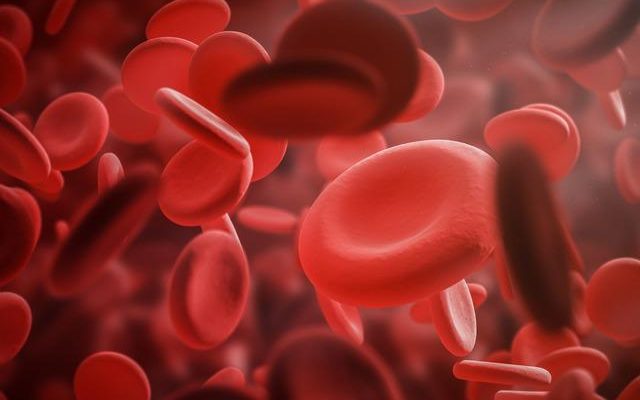Assoc. Dr. Mehmet Gündüz made a statement to raise awareness on April 17, World Hemophilia Day. Assoc. Dr. Gündüz said that hemophilia disease causes symptoms such as bleeding not stopping, stopping late, or starting again after a stopped bleeding, as a result of the deficiency of the factor involved in blood clotting.
Gündüz said, “Bleeding may generally occur from the skin due to a cut on our skin, or it may occur when the bleeding does not stop after tooth extraction or circumcision. Sometimes, it may occur in the form of larger bleeding into the muscle or joint as a result of impact or trauma. These major bleedings can lead patients to disability and even death. Hemophilia are X chromosome-linked disorders that predominantly affect males. However, women who are heterozygous carriers may also be affected and have factor levels in the hemophilic range. “Hamophilia is a disease that requires lifelong attention, and it also brings life risks if it is not followed up,” he said.
‘IT IS MOSTLY SEEN IN MEN’
Assoc. Prof. said that hemophilia affects more than 1.2 million people worldwide and is a common disease mostly in men. Dr. Gündüz said, “There are two main types of the disease, A and B. Hemophilia A (factor 8 deficiency) is more common than hemophilia B (factor 9 deficiency). Hemophilia A is seen in approximately one in 4 thousand-5 thousand live male births, while Hemophilia B is seen in approximately one in 15 thousand-30 thousand live male births. In our country, there are 5 thousand registered Hemophilia A and 950 Hemophilia B patients. There are also patients who are indifferent. When we foresee these, the situation remains serious. Especially children with a family history of hemophilia and people with signs of easy bruising or bleeding need to be screened and tested. If possible, I especially warn families with a history of hemophilia to investigate the presence of hemophilia in the baby immediately after birth. Hemophilia occurs in all racial and ethnic groups and throughout the world. A publication from the World Hemophilia Federation estimates that 43 percent of the world’s hemophilia population lives in India, Bangladesh, Indonesia and China, and only 12 percent of them are diagnosed.”
‘MANY OF THE CASES ARE HERITAGE’
Emphasizing that the majority of hemophilia cases are hereditary, some may be seen as a result of inhibitors that develop against subsequent factors. Mehmet Gündüz said:
“Congenital hemophilia can be passed down from one or both parents. Hemophilia A and hemophilia B are inherited in a recessive pattern linked to the X chromosome. The genes associated with these conditions are located on the X chromosome, one of the two sex chromosomes. Hemophilia A and B are inherited in the same way. Because both factor VIII and factor IX genes are located on the X chromosome. There are no genes for clotting factors on the Y chromosome. Clinical manifestations of hemophilia are related to bleeding resulting from impaired coagulation, sequelae from bleeding, or deficient clotting factor infusion. We can give an example as follows; Severe bleeding from a small cut, bleeding that does not stop after tooth extraction or circumcision, unreasonable and very difficult nosebleeds, bleeding from the wound stopping and starting again, swelling in the joints, redness, increased temperature, heavy menstrual bleeding in girls.
‘FOLLOW EASY BLURING AND BLEEDING ON BABIES’ SKIN’
Assoc. Prof. said that the age of first bleeding is within the first year and one and a half years of life in most babies. Dr. Gündüz emphasized that follow-up and observation are very important. Assoc. Dr. “Signs of bruising, joint bleeding, and other sites of musculoskeletal bleeding become more common when children become mobile (including crawling),” Gündüz said. “Circumcision area and mouth injuries are also among the common areas in young children,” he said.
‘A CAREFUL LIFE IS MANDATORY’
Assoc. Prof. warns that hemophilia patients should live a careful life. Dr. Gündüz said, “Haemophilia patients should definitely avoid possible injuries. People with mild hemophilia can participate in a variety of activities. Those with severe hemophilia should avoid contact sports and other activities that may cause bleeding or injury. If there is bleeding, it is very important for them to be aware of how to manage this situation correctly. They must follow their doctor’s check-ups and be under constant surveillance. In emergency situations, they must be knowledgeable about hemostatic measures and how to provide medical assistance. In case of bleeding, clotting medications should always be on hand. Otherwise, it becomes necessary to seek medical help and there is a life-threatening situation. For this reason, the hemophilia follow-up report of patients with severe and moderate hemophilia includes the patient’s identity information and a special colored (orange) hemophilia prescription for which the medication will be prescribed. This prescription must be written by a hematologist, internal medicine or pediatrician. “It is filled by the pharmacist who gives the medicine,” he said. (DHA)

